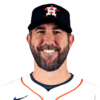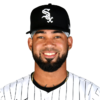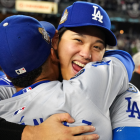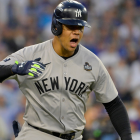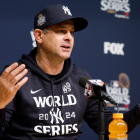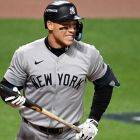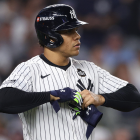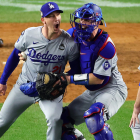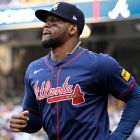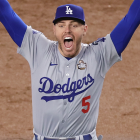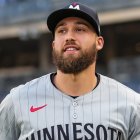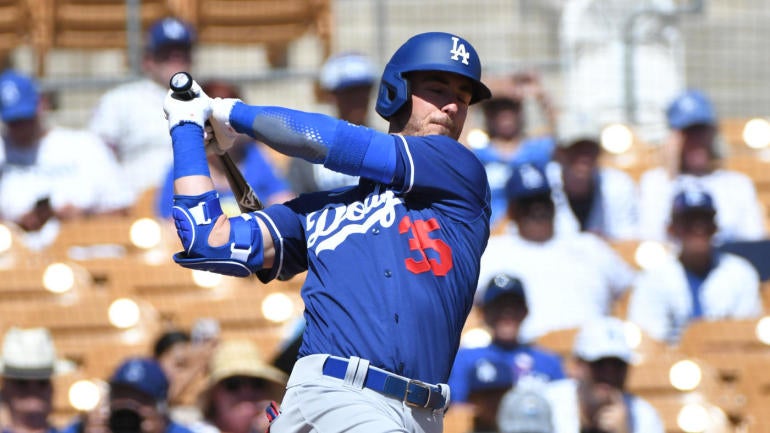
Generally speaking, spring training numbers don't mean anything. There is so much noise -- a hitter could face a Cy Young winner in his first at-bat and a kid ticketed for Single-A in his second -- and the sample is so small that it's hard to believe anything. That is especially true this year, with the shortened exhibition schedule. Spring training is full of lies.
Except sometimes spring training does tell us the truth, or at least offer little nuggets of truth. Read between the lines and you can pick up on trends and see things that actually mean something during spring play. A pitcher with a viable new pitch or a hitter with a new bat path are the kinds of things we can see in camp that can change a player's outlook. With that in mind, here are four spring training trends worth knowing.
1. Cody Bellinger's strikeouts
Last season was an ugly, worst-case scenario kind of season for Bellinger. His 2021 numbers seem to get worse every time I look at them: .165/.240/.302 in 350 plate appearances. Hard to believe it was the same player who was so dominant en route to the NL MVP award in 2019. Bellinger looked completely lost at the plate last year.
The good news: it's a new year and Bellinger has a clean slate. The bad news: Bellinger's spring looks a lot like his 2021. He is 4 for 27 (.148) with 17 strikeouts. Bellinger has struck out only ("only") three times in his last eight at-bats after striking out 14 times in his first 19 at-bats, so ... progress? Swings like this make me go 😬:
Cody Bellinger strikes out for the 16th time this spring #Dodgers pic.twitter.com/0dg3L6LpFc
— MF DAVANTE (@oldmanturner) March 30, 2022
More important than the raw stats is Bellinger's tinkering. He's changed his swing and setup at the plate several times this spring, which is as good an indication as we'll get that he's not feeling right. Bellinger has taken a boatload of at-bats in backfield games in an effort to get himself on track. From The Athletic's Fabian Ardaya:
"The goal," said Dodgers hitting coach Robert Van Scoyoc, "is to kind of get a consistent routine and process and find something that sticks and stick to it and not bounce around.
"(With) some of that, if he wants to experiment, he's his own person and if he comes up with a thought, he has a right to try that. It's his swing, his career, and we've got to be there to help and support him even if you don't necessarily think that's the right thing at that moment. It's his swing, and he drives that."
That's really not what you want to read a week before Opening Day. Bellinger no doubt wanted to come to camp, tear the cover off the ball, and build confidence heading into the regular season. Instead, he's trying to find a swing that works and looking forward to another fresh start (Opening Day) after the last fresh start (spring training) didn't change anything.
The Dodgers have a deep enough offense that they can survive another poor Bellinger season. He's still an outstanding defensive center fielder, so he's not a total zero, and a turnaround is always one swing away. That said, Bellinger having a strong bounce-back season (not even another MVP season) would go a long way toward helping Los Angeles return to the World Series.
2. Justin Verlander's fastball command
Had you not known any better, you would have assumed Verlander never had Tommy John surgery based on his performance this spring. The two-time Cy Young award winner (and three-time runner up) has struck out 10 batters in 8 2/3 innings spanning three starts. He has yet to allow a run. Hard to be much better than that.
Verlander did have Tommy John surgery though, and it has shown in his fastball command. Command is typically the last thing to return following elbow reconstruction -- velocity is the first and Verlander's average fastball this spring is essentially identical to his last healthy season in 2019 (94.6 mph vs. 94.8 mph) -- and Verlander's fastball locations have been scattershot:
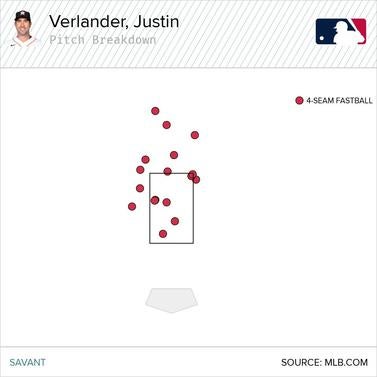
Verlander recently said he fixed a mechanical issue -- "I think I kind of found a little something mechanically that has cleaned up a lot of stuff. One of those easy fixes," he told the Associated Press -- and perhaps that will get his fastball more in the zone and more in-line with where he wants it. Through three spring starts, he's sprayed the ball around quite a bit.
Again, inconsistent location is very common in the early days back from Tommy John surgery. Verlander's velocity is there, which is a pretty good indication he's healthy. He's also a Hall of Fame talent who I expect to get his command ironed out fairly soon. For now, it looks like Verlander is still shaking off the typical post-elbow reconstruction rust.
3. Deivi García's velocity
A year ago at this time García was the Yankees' No. 1 pitching prospect. He impressed the team enough during his 2020 MLB debut to earn a postseason start that year (as an opener). Things completely fell apart in 2021. García had a 6.85 ERA in 90 2/3 innings in Triple-A, and in those 90 2/3 innings he walked 68 and allowed 21 home runs. Like I said, it completely fell apart.
Mechanical issues, specifically a lower arm slot, contributed to García's rough 2021. He dropped his arm and his stuff flattened out, and his command worsened. Reports had him sitting 91-92 mph in Triple-A. This spring, García's fastball has averaged 95.2 mph and topped out at 96.8 mph. He's allowed just one run in five innings, though that's less important than the velocity.
"I do remember a couple of outings where I touched 96 last year, but I'm definitely more consistent right now," García told MLB.com's Bryan Hoch last week. "I've been trying to feel more within myself on the mound, just concentrating on execution and using my fastball as a weapon, establishing it. It's been pretty good."
García credits improved mechanics for the velocity spike -- "I'm trying to get back to a natural set of movements and not overthinking my mechanics," he told Dan Martin of the New York Post -- and whether he holds the new velocity all year remains to be seen. That said, a 3-4 mph spike is significant and demands attention. García has two extra gears on his fastball, not one.
The Yankees passed over García for several call ups last year and he'll start the season back in Triple-A. With Domingo Germán on the 60-day injured list, Luis Severino recently battling arm soreness, and Jameson Taillon coming off ankle surgery, opportunities will arise this year. If they stick, García's improved mechanics and velocity would make him a big-league option again.
4. The spring home run rate
Individual performances are largely meaningless in spring training. League-wide rates tend to be predictive for the regular season, however, because they cover tens of thousands of plate appearances, and those all together can mean something. The regular season home run rate is usually a tick higher than it was in spring training. Here are the last few years:
| Spring home run rate (AB/HR) | Regular season home run rate (AB/HR) | |
|---|---|---|
2017 | 31.9 | 27.1 |
2018 | 28.8 | 29.6 |
2019 | 27.9 | 24.6 |
2021 | 27.7 | 27.2 |
2022 | 24.4 | ??? |
Ignoring the 2020 pandemic season, the regular season home run rate was a tick higher (i.e. fewer at-bats per home run) than the spring home run rate in 2017, 2019, and 2021. The 2018 season was an outlier. Home runs were hit at a healthier pace in spring training than during the regular season that year. But again, 2018 is an outlier compared to other recent seasons.
This spring, the ball is absolutely flying out of the park. There's been one homer every 24.4 at-bats. In 2019, it was one homer every 24.6 at-bats en route to the highest single-season home run total in history. MLB is ahead of that 2019 pace this spring, so if the trend holds up and more homers are hit during the regular season than in the spring, the record will be broken again.
The caveat here is this has been an unusual spring training. It's been shortened and big-league pitchers are not fully stretched out, so we've seen a lot of minor leaguers the last few weeks, and that can skew the data. I'm inclined to say we should wait and see what happens in the regular season rather than draw conclusions from the spring home run data. Make no mistake though, homers are being hit at an incredible rate this spring. You aren't imagining it.




